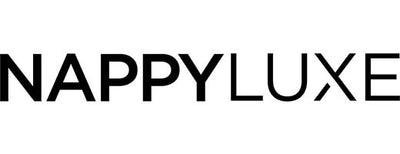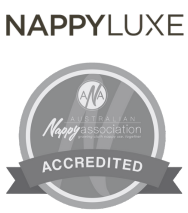How To Do Nappy Free Time

Regardless of whether you use reusable or disposable nappies, scheduling in some nappy free time brings many benefits for your baby.
The meaning of nappy free time is exactly what it sounds: it's giving your baby some nudie time where they aren't wearing a nappy.
Even if you change your baby's nappy very frequently and ensure baby is never sat in a soiled nappy, a nappy is still effectively a toilet strapped to your baby.
Disposable nappies are made of plastic and when babies wear them 24/7 without a break, it can cause discomfort to their delicate skin.
Even if you opt for reusable nappies made from natural fibres, the nappy is still thicker than clothing and therefore not as breathable as clothes are.
Here we explore the benefits of nappy free time, when to do it, and how to get started.
What are the benefits of nappy free time?
Providing some nappy free time for your baby brings many benefits:
Allows their skin to breathe: The main benefit is that it gives your baby's skin a chance to breathe, and therefore can reduce the chance of them developing nappy rash. If they do already have nappy rash, it's a great method to clear the rash swiftly.
Gives them freedom to move: Another benefit is that it gives your baby some freedom to move and practice those important gross motor skills without any clothing or nappies getting in the way. You may find the first time your baby rolls over is during some nappy free time.
A fun experience for baby: Many babies just love the feeling of having some naked time and are visibly delighted by the experience.
Start toilet training: It provides you as a parent more visibility of your baby's toileting habits, and those wanting to try early toilet training (also known as elimination communication) can start to learn the cues for when your baby will do a poo or a wee. You can then apply this learning to start placing baby over the potty at the right time.
Reduced nappy usage: by factoring in some nappy free time, you may find that's one less nappy baby gets through that day. This is especially true if you have a toddler where you can let them run around the back yard naked for a longer period of time.
Implement routine: Finally, for those who love having a set routine for baby, scheduling in nappy free time during their awake window is a great activity to keep them entertained and help them discover the world around them. Especially on a day that's too rainy or too hot to venture outside.
Do babies need nappy free time?
Whilst babies don't necessarily need nappy free time, there's no doubt that there are many benefits to doing it as outlined above.
If they do develop nappy rash, then you might find that nappy free time is needed in this scenario to eliminate the nappy rash, alongside using a good quality nappy cream.
And if your baby doesn't have nappy rash, it's still a good way to help protect against it.
If you haven't been doing nappy free time and your baby hasn't developed any nappy rash, you might find you want to do it anyway for a fun bonding activity and to allow your baby to explore.
How long should nappy free time be?
The length of time for nappy free time will depend on a few factors such as age of your baby and temperature of the house.
Usually around 30 minutes is about right for a young baby, but you may want to do it for longer if you have an older baby.
Some parents prefer to just do a few minutes of nappy free time after every nappy change rather than having it as a big activity.
You will also need to listen to your baby and pivot plans where needed, they might have hd enough after 20 minutes and you need to cut the session shorter than you'd planned for.
How much nappy free time?
A daily dose of nappy free time is a great amount to aim for, but again it really does depend on your personal circumstances and preferences.
Some parents with busy schedules may only be able to fit it in a few times per week and this is still better than nothing, so don't be deterred if this is all you can manage.
Other parents will allocate 30 minutes a day as part of their daily routine, whilst others will do a few minutes after every nappy change.
The important takeaway to remember is that anything is better than nothing.
What's the best nappy free time mat?
The answer to this can vary slightly depending on what type of flooring you have at home.
What works well for every type of flooring is a padded waterproof mat for baby to lay on for their nappy free time.
Padded waterproof baby mats such as these ones from Munchkin and Bear are fantastic for catching any mess as well as providing a soft cushioned surface for your baby's head as they exercise their neck strength.
You will no doubt find that your baby will do a wee or a poo during the nappy free time (or both!), so be prepared with cloths to absorb the mess and a disinfectant spray cleaner.
Something about their private parts being exposed to air seems to trigger them to wee, plus young babies do lots of frequent small wees as their bladders are so tiny.
We find nappy flats, muslin wraps, burp cloths or even trifold nappy inserts make fantastic clean up cloths for such messy events.
You may even want to place one of these clean cloths between baby and the mat to ensure any mess is absorbed quickly without spreading everywhere.
If you have tiled or wooden floor and don't have access to a waterproof play mat, you may be able to simply used a large folded towel.
If you have carpeted floor but you're on a budget, you can buy a cheap waterproof messy mat which will still do the job.
What age to start nappy free time?
You can start your baby off with nappy free time at any age from newborn, we find the younger the better before they're on the move!
Nappy free time can be combined with tummy time, which should also be done from newborn age.
Once baby starts crawling and is on the move, you can always move nappy free time outside on a warm summer day to avoid mess over your furniture and carpets.
How often should you do nappy free time?
The frequency for nappy free time is totally up to you and how you can fit it into your lifestyle.
It is recommended to try to fit in a small amount each day, but if this is too much then a few times a week is also fine.
Some parents find it helps them to stay consistent if they always turn baby over onto their tummy after a nappy change and give them a few minutes in this position multiple times per day before putting them into their fresh nappy.
How to do nappy free time
Here are some steps to get you started with nappy free time for your baby:
Check the room temperature: First ensure the temperature inside is suitable for baby. If it's winter then turn the heating up to make it a comfortable temperature. If it's a hot summers day and the airconditioning is on, turn it off for the duration of the nappy free time - remember your baby will be cooler than you without their clothes on.
Get prepared: Have the mat ready, some cloths, reusable cloth wipes, spray cleaner, and a fresh nappy and clothing for baby for when you're done. It's also a good idea to have some toys at the ready to keep them entertained, perhaps a mirror, some high-contrast cards, or a tummy-time mat. Bear in mind that young babies that are breastfed are prone to doing runny and sometimes explosive poos. While baby is laying on their tummy, it might be best to lay a cloth over their bottom just in case, and avoid doing the nappy free time close to your favourite white couch!
Place baby on the mat: Place your chosen cloth on the mat, undress baby and place them on top of the cloth on their tummy to do some tummy time. Get down to floor level with your baby and use the toys to keep them entertained. You can even sing nursery rhymes or play them some music.
Help baby roll: Change up the position and help your baby roll over onto their back. Just remember that if you have a boy and they do a wee in this position whilst doing nappy free time, this could go all over their face! Place a clean dry reusable wipe over their penis to catch and absorb any wee before it has a chance to go everywhere.
Clean up and dress baby: once baby has had enough (or perhaps there have been a few accidents that need to be cleaned up), dress baby and move them somewhere comfortable before you start cleaning up.
In summary, nappy free time benefits your baby in many ways and it's highly recommended to incorporate into your daily routine. Our tips will help you do it successfully and be prepared for any mess that comes alongside the fun.
Meet the Author
Natalie Lassen

Natalie, Founder of NappyLuxe, is an eco-conscious mother and entrepreneur who discovered the benefits of cloth nappies for her family and the environment. With a mission to create the ultimate cloth nappy, she spent years researching and testing various designs before launching NappyLuxe - a range of high-quality, easy-to-use, and ultra-absorbent cloth nappies. Natalie is a member of the Australian Nappy Association, that aims to grow cloth nappy usage across Australia. She is passionate about sharing her experience and expertise, helping parents make informed decisions and embark on their own sustainable parenting journey.
Blog posts
How To Use Wool Nappy Covers At Night (Benefits & Wash guide)
Best Cloth Nappies Australia [What Features Do Top Brands Have In Common]
The 5 Top Uses For Cloth Wipes Revealed
Get 10% off your first order
Plus get notified about promotions, new releases and journal updates.





















